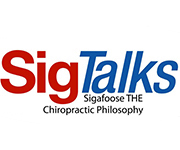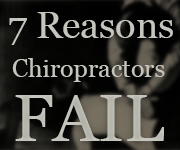
By Krista Burns, Posted February 7th 2016 In Sigafoose.com
Did you know that your posture is a predictor of early mortality? That how you hold your body upright against gravity on a day-to-day basis is one of the most significant factors impacting the longevity of your life?
Sure they have been told to sit up straight up since they were children. When people hear the word “posture” our natural response is to sit up straighter. However, the majority of the population associates their posture with how they look. Recognizing that they look more confident and thin when sitting up straight with their shoulders pulled back.
The thoracic spine plays a major role in trunk stability and protection of the spinal cord. Due to uncorrected chronic postural distortion patterns, up to 40% of the elderly population presents with hyperkyphosis.
“Hyperkyphosis may be independently associated with an increased risk for adverse health outcomes, including impaired pulmonary function, decreased physical function capabilities, and future fractures” (Kado et al., 2007, p. 330).
What patients don’t realize is that sitting up straight not only makes them look better, but it improves the quality and quantity of their life. The structure of their body dictates the function of their body. The alignment of their posture predicts their ability to thrive.
Gain certainty in what you do as a healthcare professional, by specializing in postural correction. Communicate the Posture Health Connection to your community and impact the lives of business people to have healthy careers, teach children proper postural hygiene habits to prevent years of unnecessary pain and discomfort, and reprogram aspiring athletes to train with proper postural design.
Your evidence-based practice starts here and now. Get the three must-read research articles pertaining to physiologic compromise of hyperkyphosis.
1) Increased Thoracic Kyphosis Increases Early Mortality:
This research study demonstrates the correlation of hyperkyphotic spinal posture as a predictor of early mortality in older men and women. Kado et al. (2005) evaluated the link between hyperkyphosis of the thoracic spine and early mortality among community dwelling, elderly men and women. If hyperkyphosis is related to early mortality, presumably proper posture is related to increased longevity. Posture Experts have sound evidence of why educating their patients of proper postural hygiene to prevent postural degeneration if of utmost importance.
Kado, D., Huang, M., Barrett-Connor, E., & Greendale, G. (2005) Hyperkyphotic Posture and Poor Physical Functional Ability in Older Community-Dwelling Men and Women: The Rancho Bernardo Study. Journals of Gerontology: Biological Sciences, 60(5), 633-637.
2) Hyperkyphosis in Thoracic Spine Predicts Mortality in Women:
Hyperkyphosis of the thoracic spine in women predicts mortality, independent of the presence of vertebral osteoporosis. The authors of this study concluded that the presence of an increased kyphosis in elderly women showed a 1.14-fold increased risk for death.
The presence of a hyperkyphotic spinal presentation was directly related to increased mortality, independent of other variables such as spinal osteoporosis. Therefore, women who take preventative actions to have good posture, without a “Granny’s Hump” presentation, are more likely to live longer. Educating your patients of the importance of postural hygiene can add quantity and quality to the years of their life.
Kado, D. et al. (2009) Hyperkyphosis predicts mortality independent of vertebral osteoporosis in older women. Annals of Internal Medicine 150:681-687.
3) HyperKyphosis Increases Risk for Fracture, Early Mortality, and Impairs Quality of Life:
The authors of this article reviewed the prevalence and natural history of hyperkyphosis, along with associated health implications if left untreated. They concluded that hyperkyphosis has many associated health complications, including increased risk for fracture and mortality, and is associated with impaired physical performance, health, and quality of life. Women with hyperkyphosis report more physical difficulty, more adaptations to their lives, and greater generalized fears than women without hyperkyphosis.
If you are interested in learning more then just click any of the links above or just click HERE.
Katzman et al. (2010) Age-Related Hyperkyphosis: Its Causes, Consequences, and Management. Journal of Orthopedic and Sports Physical Therapy, 40(6) 352-360.
Written By:
Dr. Krista Burns DC, PhD, CPE, CPEP
Doctor of Chiropractic
Doctor of Health Administration
Co-Founder of the American Posture Institute
World’s Most Certified Posture Expert





